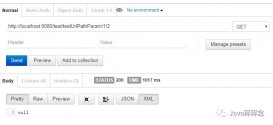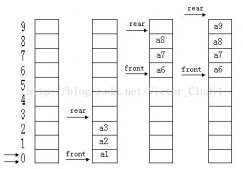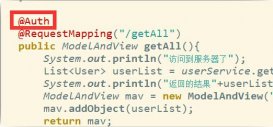1. If 语句
需求:根据作者名字和博客名字来查询博客!如果作者名字为空,那么只根据博客名字查询,反之,则根据作者名来查询
|
1
2
3
4
5
6
7
8
9
10
11
12
13
14
|
<!--需求1:根据作者名字和博客名字来查询博客!如果作者名字为空,那么只根据博客名字查询,反之,则根据作者名来查询select * from blog where id="codetool">
这样写我们可以看到,如果 author 等于 null,那么查询语句为
where 元素只会在子元素返回任何内容的情况下才插入 “WHERE” 子句。而且,若子句的开头为 “AND” 或 “OR”,where 元素也会将它们去除。
如果 where 元素与你期望的不太一样,你也可以通过自定义 trim 元素来定制 where 元素的功能。
同理,上面的对于查询 SQL 语句包含 where 关键字,如果在进行更新操作的时候,含有 set 关键词,
这个例子中,set 元素会动态地在行首插入 SET 关键字,并会删掉额外的逗号(这些逗号是在使用条件语句给列赋值时引入的)
有时候,我们不想用到所有的查询条件,只想选择其中的一个,查询条件有一个满足即可,使用 choose标签可以解决此类问题,类似于 Java 的 switch 语句
将数据库中前三个数据的id修改为1,2,3;
需求:我们需要查询 blog 表中 id 分别为1,2,3的博客信息
有时候可能某个 sql 语句我们用的特别多,为了增加代码的重用性,简化代码,我们需要将这些代码抽取出来,然后使用时直接调用。
提取SQL片段:
引用SQL片段:
注意:
①、最好基于 单表来定义 sql 片段,提高片段的可重用性
②、在 sql 片段中不要包括 where
bind 元素允许你在 OGNL 表达式以外创建一个变量,并将其绑定到当前的上下文。比如:
在 MyBatis 的 SQL映射文件中,有时候需要根据一些查询条件,来选择不同的SQL语句,如果每一个场景都重写SQL,很显然效率没有很高,而 MyBatis 的动态SQL很好的解决了这种问题,根据条件动态的处理 SQL, 特别简单的说就是,写一次SQL,但是根据分支等的跳转,在多个场景下也可以使用,例如:
在此之外,动态SQL同时结局了,在原生 JDBC 中需要拼接SQL语句时由于书写问题,而导致报错
到此这篇关于Mybatis超级强大的动态SQL语句大全的文章就介绍到这了,更多相关Mybatis动态SQL语句内容请搜索服务器之家以前的文章或继续浏览下面的相关文章希望大家以后多多支持服务器之家!
原文链接:https://blog.csdn.net/qq_34202873/article/details/123780451
这篇文章主要给大家介绍了关于如何通过一篇文章弄懂Spring MVC的参数绑定,文中通过示例代码以及图文介绍的非常详细,对大家的学习或者工作具有一定的...
这篇文章主要给大家介绍了关于java8新特性之Optional的相关资料,文中通过示例代码介绍的非常详细,对大家的学习或者工作具有一定的参考学习价值,需要...
下面小编就为大家分享一篇基于Java数组实现循环队列的两种方法小结,具有很好的参考价值,希望对大家有所帮助。一起跟随小编过来看看吧...
这篇文章主要介绍了Java实现LRU缓存的实例详解的相关资料,这里提供实例帮助大家理解掌握这部分内容,需要的朋友可以参考下...
这篇文章主要介绍了springmvc用于方法鉴权的注解拦截器的解决方案代码,具有一定借鉴价值,需要的朋友可以参考下。...
这篇文章主要介绍了 详解java调用ffmpeg转换视频格式为flv的相关资料,希望通过本文能帮助到大家,需要的朋友可以参考下...
这篇文章主要为大家详细介绍了Java视频格式转化的实现方法,具有一定的参考价值,感兴趣的小伙伴们可以参考一下...
在日常使用SpringMVC进行开发的时候,有可能遇到前端各种类型的请求参数,这里做一次相对全面的总结,下面这篇文章主要给大家介绍了关于springMVC获取请求参...
|
















